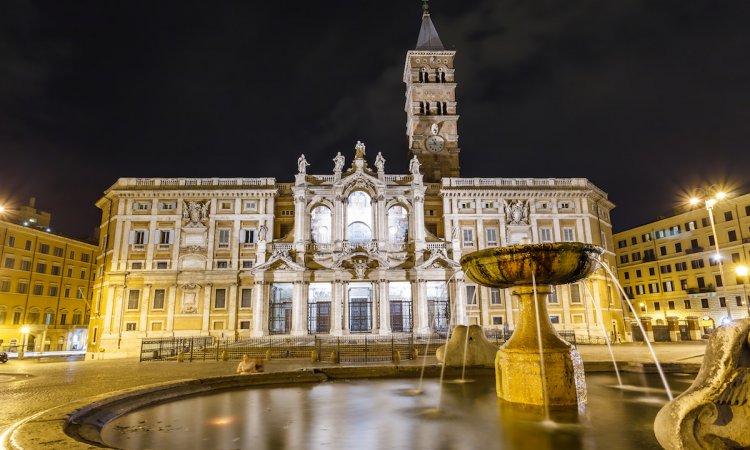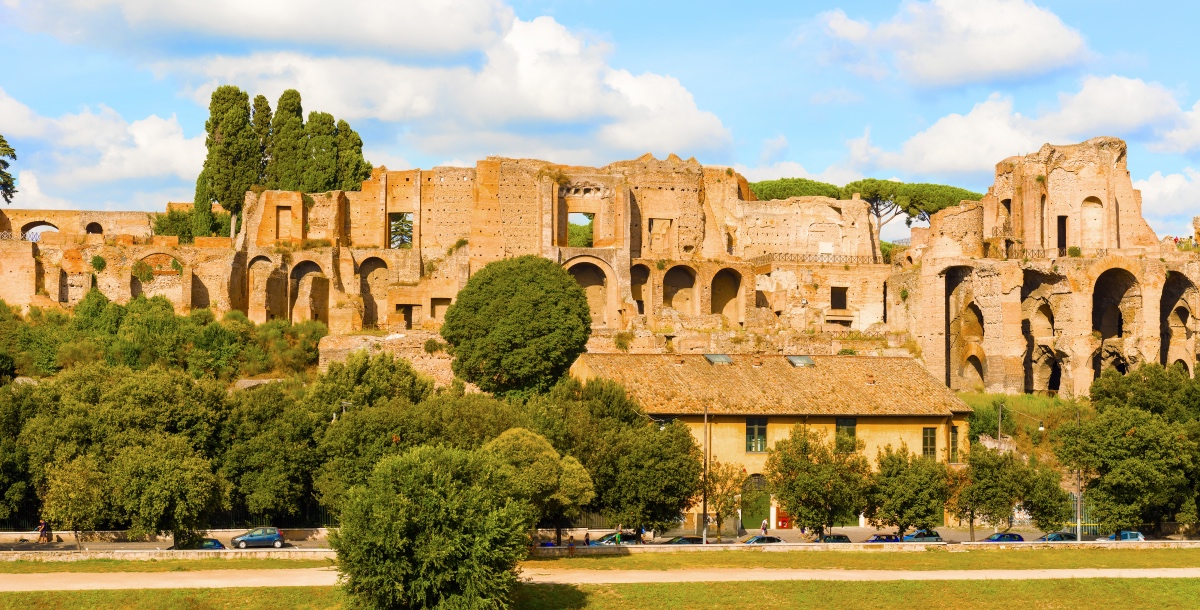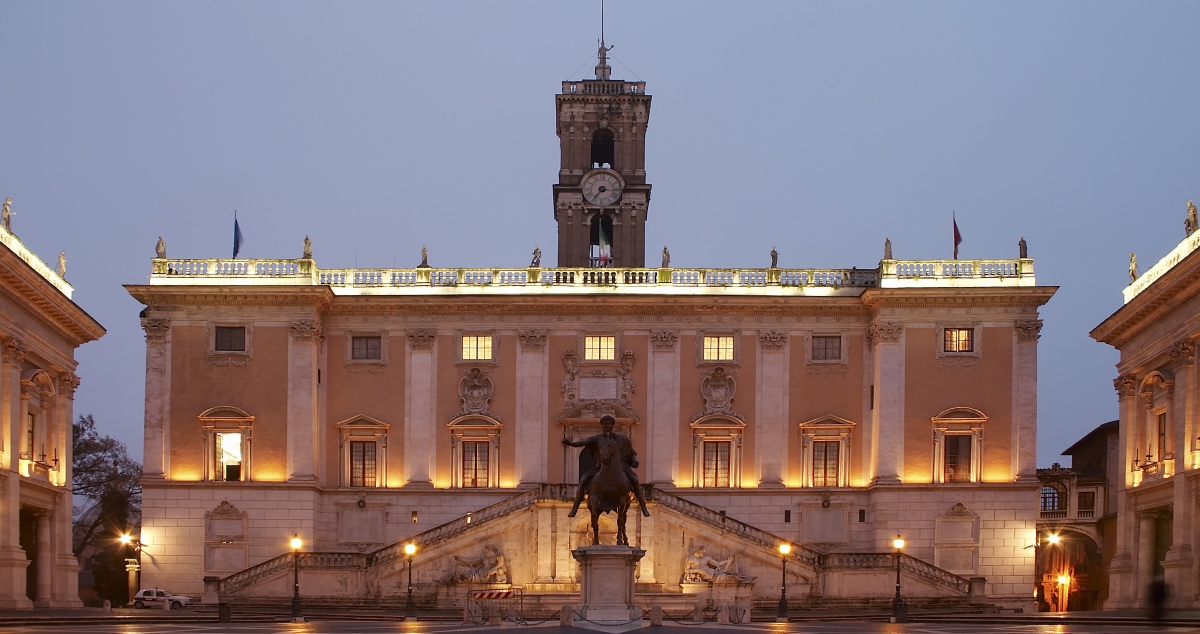
Rome was originally built on the foundations of seven independent settlements on seven hills. Over time, the swampy valleys between them were drained and replaced with public spaces. Only then did Rome as we know it begins to emerge. This consolidation of the seven hills was made concrete with the erection of the Servian Walls in the fourth century BC, built to protect the seven hills.
Because these hills have such a storied past, a great way to plan your walks in Rome is by taking in one hill and its surrounding area at a time. Each hill is the focal point for many of the top things to see in Rome, from Roman archeology to posh neighborhoods to presidential palaces.
Seven Hills of Rome - Palatine Hill

Palatine, or Palace, Hill is said to be where the brothers Romulus (legendary founder and first king of Rome) and Remus were discovered in a cave (the Lupercal) by the she-wolf Lupa who suckled them and kept them alive. Legend has it that after Romulus killed his brother Remus in a quarrel, he founded Rome on Palatine Hill in 753 BCE.
Since the time of Augustus (reign 27 BC- 14 AD) the Imperial palaces were built on Palatine Hill, which makes it one of the richest archeological sites to visit in Rome. Among the many must-see ruins on the hill are the Palace of Domitian, which dominates the site, and the houses of Livia and Augustus. On one side of the hill you’ll find the Roman Forum and Circus Maximus on the other; the Colosseum is right around the corner. The entrance fee to the Roman Forum includes access to Palatine Hill, so why not make a day of it!
Seven Hills of Rome - Caelian Hill
Caelian Hill was like the Beverly Hills of Republican Rome — if you were fashionable and wealthy, you would have a Caelian Hill address. Today the hill boasts a bit of everything for the modern tourist looking for things to do in Rome. You’ve got the ruins of the Baths of Caracalla, you’ve got the beautiful gardens of the Villa Celimontana and the stunning Basilicas of Santo Stefano Rotondo, Santi Giovanni e Paolo and the Archbasilica of Saint John Lateran, one of the papal churches.
Seven Hills of Rome - Esquiline Hill
Esquiline Hill was also another posh neighborhood for the Roman who’s who in ancient times. Located between the Termini, or main train station and the Colosseum, some of the must-sees in Rome are on Esquiline Hill: the Papal basilica of Santa Maria Maggiore, the amazing ruins of Nero’s Domus Aurea, the Baths of Trajan and the Nymphaeum, formerly known as the Temple of Minerva Medica.
Seven Hills of Rome - Capitoline Hill

You cannot go sightseeing in Rome without visiting Capitoline Hill. If Palatine Hill has dibs on the ancient palaces and some of the oldest ruins found in the city, Capitoline Hill was known as the political and religious center of Ancient Rome. The Hill has two summits — the Arx which is the higher of the two to the North and the lower, more famous Capitolium to the South. In Ancient times the hill was the home of the Temples of Jupiter, as well as the Tabularium, or Archives, which can be seen beneath the Palazzo Senatorio, Rome’s current City Hall.
To get to Capitoline Hill, climb the Cordonata, an elegant staircase that leads you into the Piazza del Campidoglio, both designed by Michelangelo during the Renaissance to revitalize Capitoline Hill. The Palazzo Senatorio is one of the buildings that line the Piazza. The Palazzo dei Conservatori and the Palazzo Nuovo are the other two buildings that line the square and are known as the Capitoline museums. They house must-see Roman antiquities such as the original bronze she-wolf (La Lupa) that dates back from the fifth Century and is considered the symbol of Rome.
Seven Hills of Rome - Quirinal Hill
Located on the North-east of the city center, and the highest of the seven hills, Quirinal Hill is best known for the Palazzo Quirinale, the official residence of the President of the Italian Republic. However, it is also a must-see for any fan of the Italian Baroque era — particularly if you’re interested in Bernini. He designed the church of Sant’Andrea al Quirinale, one of the most stunning examples of Baroque architecture there is, and the Piazza and Palazzo Barberini, which houses the Galleria Nazionale d’Arte Antica. Here you can also find Borromoni’s church of San Carlo alle Quattro Fontane — the architect’s first and final work.
Seven Hills of Rome - Viminal Hill
Though Viminal Hill is the smallest of the seven hills, don’t overlook it. In fact, if you arrive in Rome by train and get off at the Termini (the main station), you won’t be able to: it’ll be the first neighborhood you encounter, as the Termini is located on Viminal Hill. You’ll also find the Teatro dell’Opera and the Palazzo del Viminale, the current headquarters of the Ministry of the Interior. Check out the Baths of Diocletian on the northeast summit of the Viminal, with the basilica of Santa Maria degli Angeli e dei Martiri designed by Michelangelo built inside the ruins. Another must-visit is the National Museum of Rome, also known as the Terme Museum (Terme, meaning thermal as it was built on the Baths of Diocletian), that houses one of the world’s greatest collections of Greco-Roman art.
Seven Hills of Rome - Aventine Hill
Getting a little tired of the tourist throngs but still, want to soak in some of Rome’s history? Take a walk in the quiet residential streets of Aventine Hill. Though the area is mostly known for the Knights of Malta keyhole in Piazza dei Cavalieri di Malta where you can line up with the rest of the tourists to take the iconic picture of the dome of St. Peter’s through the shrubberies, Aventine Hill also has many beautiful churches and gardens, including the Basilica di Santa Sabina all'Aventino, the oldest basilica in Rome, built between 422 and 432.
Put on your walking shoes
Walking the seven hills of Rome will give you a rich perspective on the evolution of this great city. Each hill has its unique story — from ancient Roman mythologies to contemporary seats of church and state. To walk each hill is as close as you will come to living Rome’s history, one era at a time.


